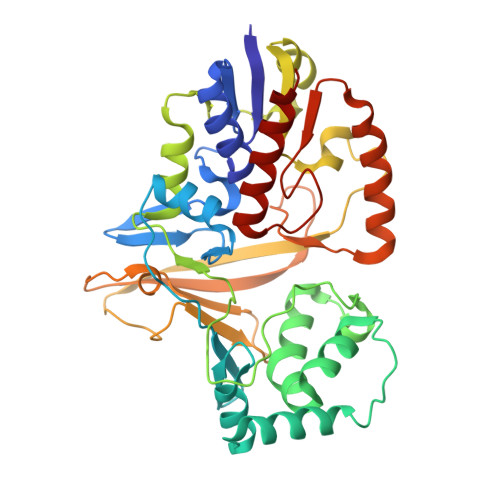UDP-galactopyranose mutase has a novel structure and mechanism.
Sanders, D.A., Staines, A.G., McMahon, S.A., McNeil, M.R., Whitfield, C., Naismith, J.H.(2001) Nat Struct Biol 8: 858-863
- PubMed: 11573090
- DOI: https://doi.org/10.1038/nsb1001-858
- Primary Citation of Related Structures:
1I8T - PubMed Abstract:
Uridine diphosphogalactofuranose (UDP-Galf ) is the precursor of the d-galactofuranose (Galf ) residues found in bacterial and parasitic cell walls, including those of many pathogens, such as Mycobacterium tuberculosis and Trypanosoma cruzi. UDP-Galf is made from UDP-galactopyranose (UDP-Galp) by the enzyme UDP-galactopyranose mutase (mutase). The mutase enzyme is essential for the viability of mycobacteria and is not found in humans, making it a viable therapeutic target. The mechanism by which mutase achieves the unprecedented ring contraction of a nonreducing sugar is unclear. We have solved the crystal structure of Escherichia coli mutase to 2.4 A resolution. The novel structure shows that the flavin nucleotide is located in a cleft lined with conserved residues. Site-directed mutagenesis studies indicate that this cleft contains the active site, with the sugar ring of the substrate UDP-galactose adjacent to the exposed isoalloxazine ring of FAD. Assay results establish that the enzyme is active only when flavin is reduced. We conclude that mutase most likely functions by transient reduction of substrate.
Organizational Affiliation:
The Centre for Biomolecular Sciences, The University, St. Andrews, Scotland KY16 9ST, UK.















